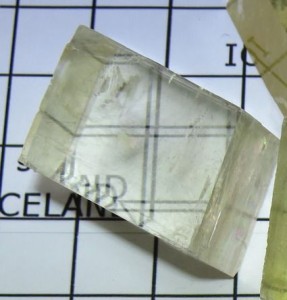
Refraction? Yes. But double refraction??
A number of phenomena produce double vision. I personally suffer a degree of double vision. It was caused by pressure damage to my 6th optic nerve. The pressure resulted from a tumor on my pituitary gland.
One of the most interesting sources of double vision is caused by the splitting of an image by a calcite crystal. Almost transparent, calcite is a form of calcium carbonate. The phenomenon is birefringence or double refraction.
Image Splitting Property
Most science loving non-scientists use the term double refraction. Refraction is the bending of light as it leaves one medium to enter another. This bending alters the course the light would have taken if there was no change in medium. Double refraction is a double bending of the light, but with only one change in medium.
But is there really only one medium change? Or is there some twist? In fact, that is the case, as we shall see.
Double Refraction
Calcite acts as though it were made of two materials. Such birefringent materials have different internal indices of refraction. They depend upon the orientation between the crystal lattice and the light striking it. The more the indices vary, the greater the splitting. Calcite has one of the largest divergences known. This makes it a most popular mineral for demonstrating birefringence.
Could It Be Used To…
A question arises. Can calcite and or a more durable birefringent material be used to coat optics? If so, then eyeglasses designed to relieve sufferers’ double vision should be possible. Perhaps the wearer would be spared the need to use prisms.
Note: You might also enjoy How Far Can Perfect Eyes See? An Ideal Earthly Scenario
References:
- Georgia State University: Hyper-Physics: Refraction of Light
- Olympus: Microscopy Resource Center: Optical Birefringence
← Back to Food and Health
← Home